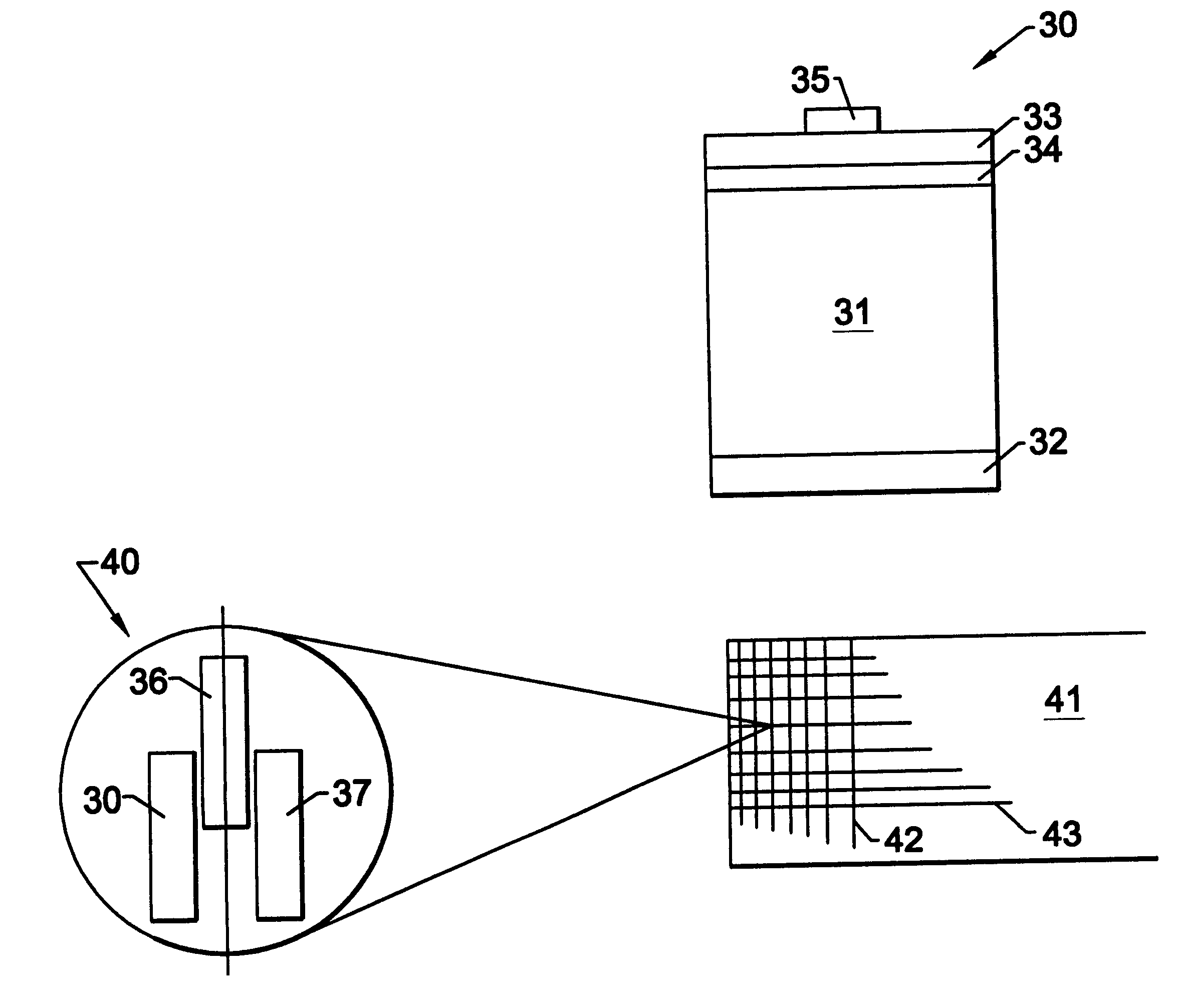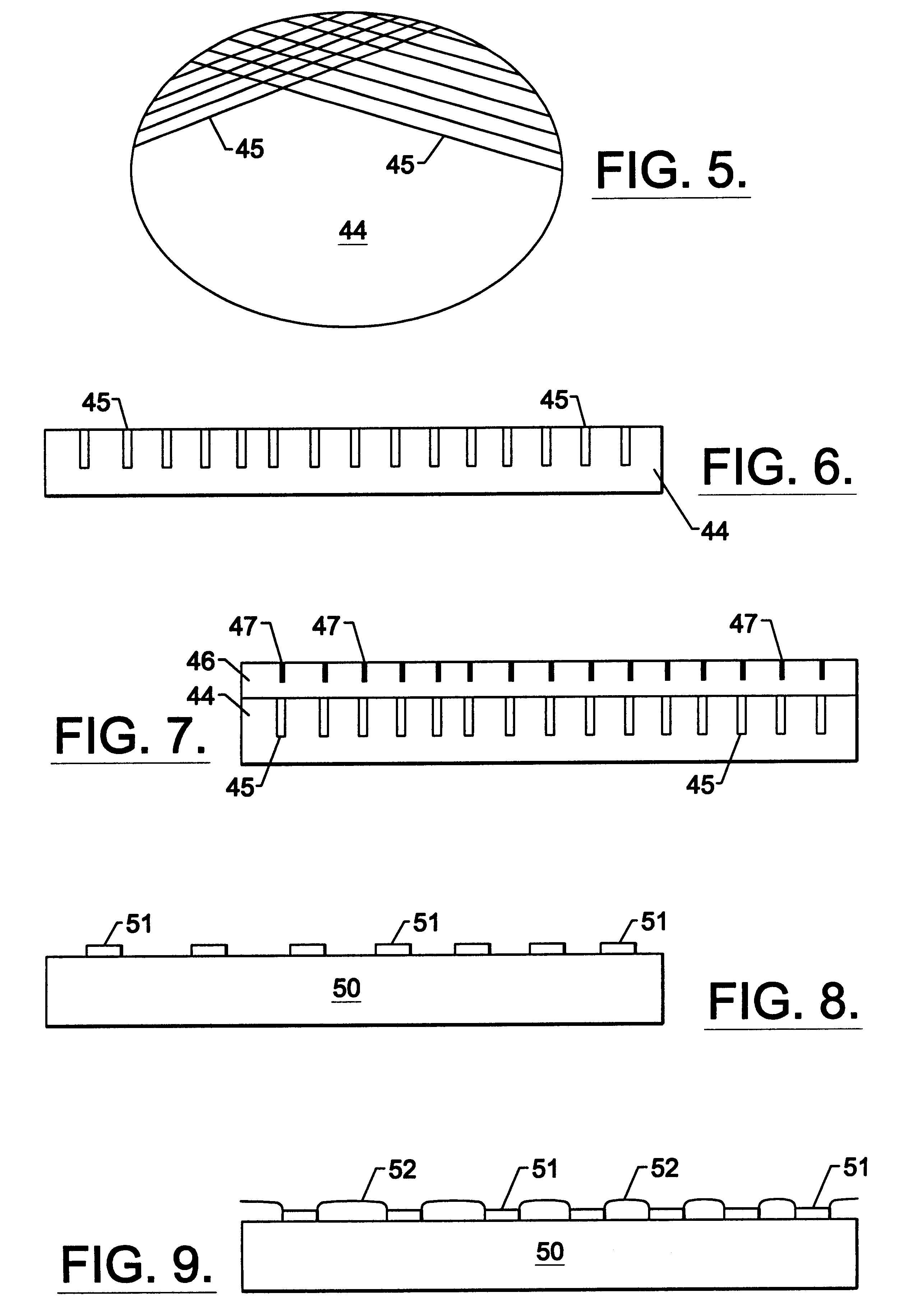Group III nitride photonic devices on silicon carbide substrates with conductive buffer interlay structure
a technology of conductive buffer and nitride, which is applied in the direction of semiconductor devices, basic electric elements, electrical apparatus, etc., can solve the problems of limited material which can work well to support group iii nitride active layer devices, certain disadvantages, and its electrically insulating character, so as to avoid cracking
- Summary
- Abstract
- Description
- Claims
- Application Information
AI Technical Summary
Benefits of technology
Problems solved by technology
Method used
Image
Examples
Embodiment Construction
In a current process for producing conductive buffer LEDs and Laser Diodes, GaN dots are first deposited. The purpose of the GaN dots is to decrease the barrier between the SiC substrate and the Si-doped AlGaN buffer layer. This is done at considerably lower temperatures than are used for the other epitaxial layers in the structure. The size and density of the dots are shown in FIGS. 16 and 17. It is important to keep the dots relatively small so the electrostatic discharge will not be adversely affected. The GaN dots are deposited in about 6 seconds, and then "capped" with Si-doped Al.sub.0.10 Ga.sub.0.90 N for about 15 seconds. The purpose of this cap is to prevent the dissociation of the GaN dots upon heating. In this material system, adding any Al to GaN, i.e., Al.sub.(1-x) Ga.sub.(x) N decreases the dissociation rate of the material because AlGaN is more stable than GaN in an NH.sub.3 / H.sub.2 atmosphere. After the capping of the dots, the temperature is then ramped up to the b...
PUM
| Property | Measurement | Unit |
|---|---|---|
| size | aaaaa | aaaaa |
| diameter | aaaaa | aaaaa |
| diameter | aaaaa | aaaaa |
Abstract
Description
Claims
Application Information
 Login to View More
Login to View More - R&D
- Intellectual Property
- Life Sciences
- Materials
- Tech Scout
- Unparalleled Data Quality
- Higher Quality Content
- 60% Fewer Hallucinations
Browse by: Latest US Patents, China's latest patents, Technical Efficacy Thesaurus, Application Domain, Technology Topic, Popular Technical Reports.
© 2025 PatSnap. All rights reserved.Legal|Privacy policy|Modern Slavery Act Transparency Statement|Sitemap|About US| Contact US: help@patsnap.com



